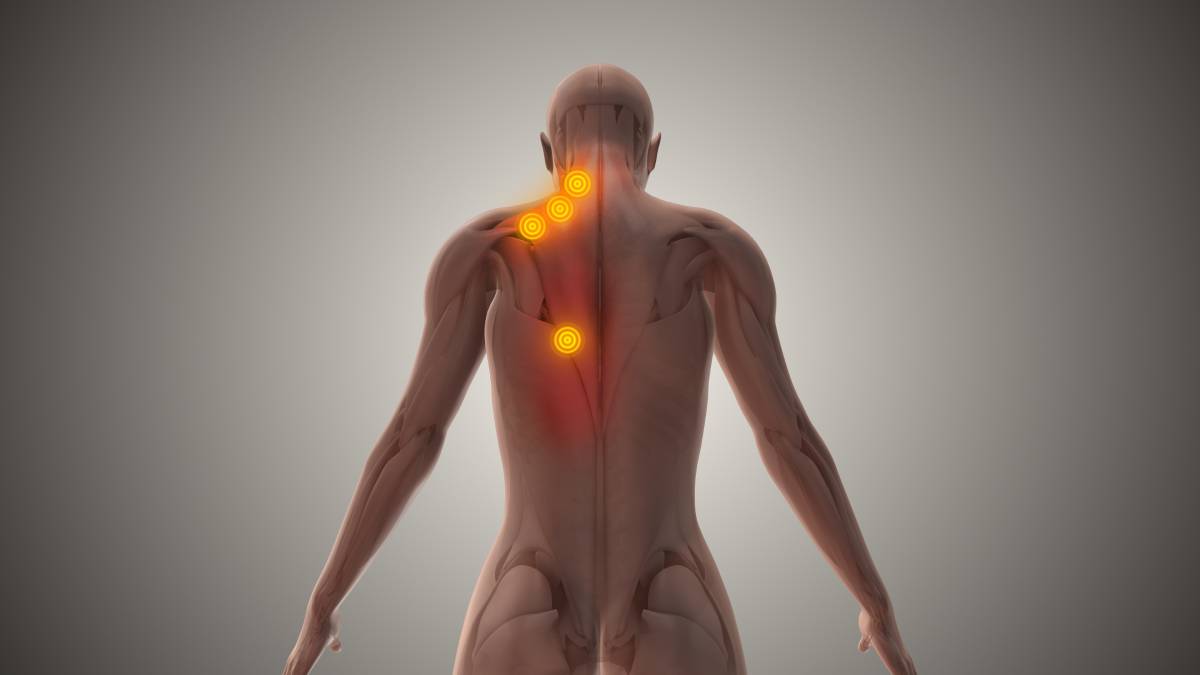Examples of Referred Pain Related to Surgery

Referred pain, a phenomenon where pain is perceived in an area distinct from its actual source, presents a challenge for recovery and pain management following surgery. This type of pain can complicate diagnosis and treatment, negatively affecting patient outcomes. It is important for perioperative team members, particularly anesthesia providers, to understand referred pain related to surgery for effective management and patient care.
Referred pain occurs due to the convergence of nerve fibers from different anatomical sites onto the same neurons in the spinal cord. The brain incorrectly localizes the sensation of pain arising from an internal organ or from deep tissue to a more superficial or distant area innervated by the same spinal level (1). This misinterpretation arises because the brain is more accustomed to processing somatic pain (skin, muscles, and joints) than visceral or deep tissue pain. After surgery, the pathogenesis of referred pain involves multiple mechanisms, including inflammatory responses, nerve injury, and changes in central pain processing. Surgical interventions can lead to local inflammation, releasing cytokines and other mediators that sensitize peripheral nociceptors. This peripheral sensitization can enhance the transmission of pain signals to the central nervous system, where central sensitization may occur, further amplifying pain perception (1).
For example, during a laparoscopic cholecystectomy—a minimally invasive procedure to remove the gallbladder—which often causes patients to report shoulder pain. This phenomenon occurs due to the insufflation of the abdomen with carbon dioxide, which creates a space for the surgical procedure but inadvertently causes diaphragmatic irritation. The diaphragm is innervated by the phrenic nerve, which originates from the C3, C4, and C5 nerve roots in the cervical spine. The referred shoulder pain is attributed to the convergence of sensory inputs from the diaphragm and the shoulder region at the spinal cord level, leading the brain to misinterpret diaphragmatic irritation as shoulder pain (1).
Referred pain can also occur after coronary artery bypass grafting (CABG), a procedure performed to improve blood flow to the heart. After a CABG, many patients experience back or shoulder pain. This is often due to extensive manipulation of internal structures and the sternotomy incision required to access the heart, which can strain thoracic muscles and irritate pleural and pericardial tissues (2). The complex innervation of the thoracic cavity, involving multiple spinal nerves, facilitates the referral of pain to the shoulders or back, as the central nervous system struggles to localize the precise origin of the visceral pain.
Diagnosing referred pain after surgery requires a comprehensive assessment, considering the patient’s surgical history, pain characteristics, and physical examination. The challenge lies in distinguishing referred pain from direct surgical site pain or other postoperative complications. Clinicians must carefully evaluate the pain’s onset, quality, distribution, and any related symptoms, alongside imaging and diagnostic tests as necessary (1). Initial management of post-surgical referred pain may include pharmacological interventions, such as non-steroidal anti-inflammatory drugs (NSAIDs), acetaminophen, or opioids for acute pain control. Adjuvant therapies like gabapentin or amitriptyline may benefit patients with neuropathic components to their pain. Physical therapy, nerve blocks, and complementary therapies like acupuncture can also play roles in a comprehensive pain management strategy (3).
Referred pain related to surgery represents a complex interplay of physiological processes, requiring careful consideration in the post-operative care of patients. Understanding its pathogenesis, characteristics, diagnosis, and treatment options is essential for clinicians to effectively manage this challenging condition and improve patient outcomes.
References
- Kehlet H, Jensen TS, Woolf CJ. Persistent postsurgical pain: risk factors and prevention. Lancet. 2006;367(9522):1618-1625. doi:10.1016/S0140-6736(06)68700-X
- Kalso E, Perttunen K, Kaasinen S. Pain after thoracic surgery. Acta Anaesthesiol Scand. 1992;36(1):96-100. doi:10.1111/j.1399-6576.1992.tb03430.x
- Woolf CJ, Chong MS. Preemptive analgesia–treating postoperative pain by preventing the establishment of central sensitization. Anesth Analg. 1993;77(2):362-379. doi:10.1213/00000539-199377020-00026
